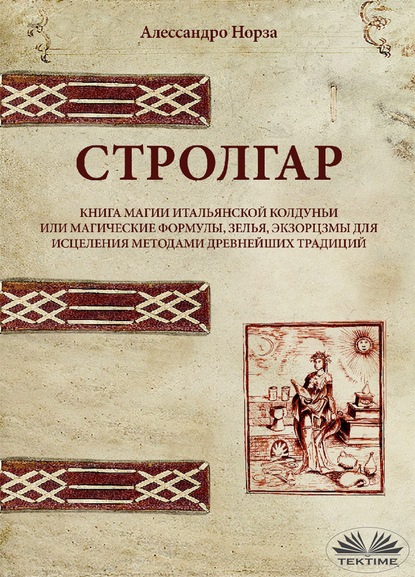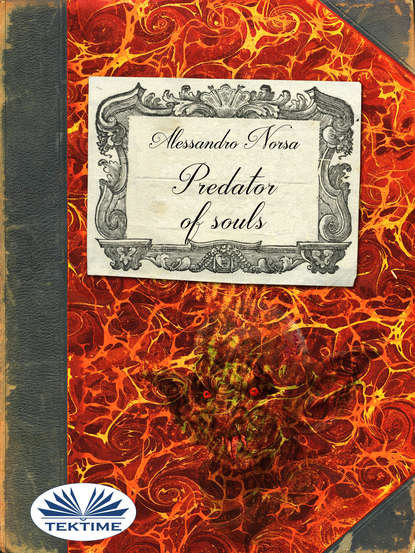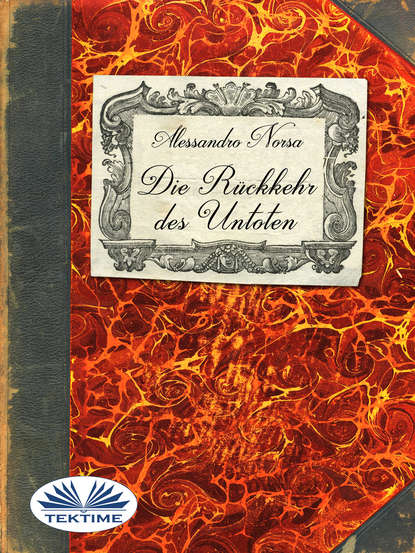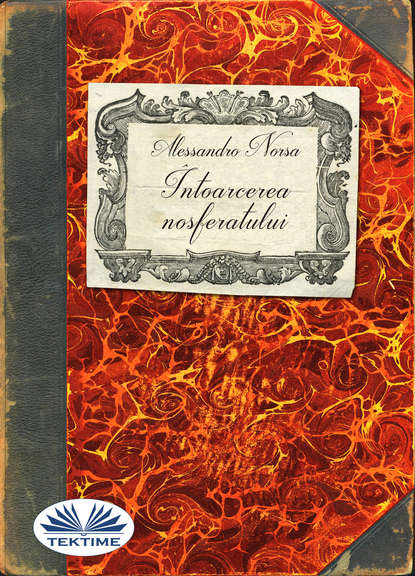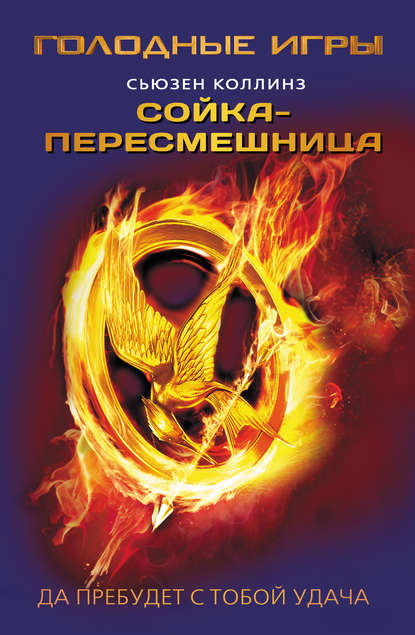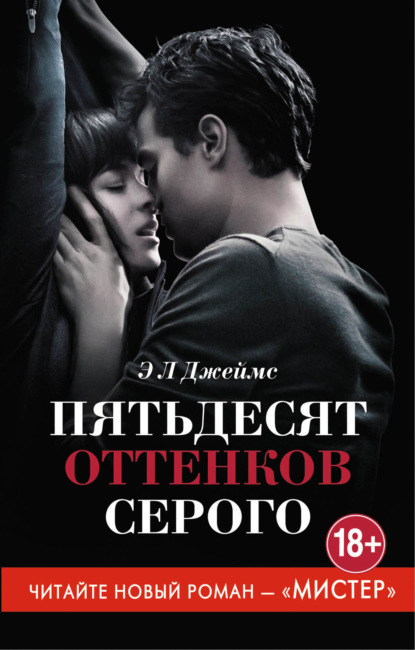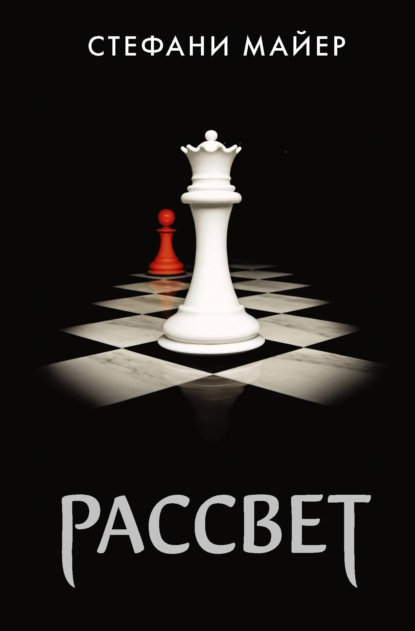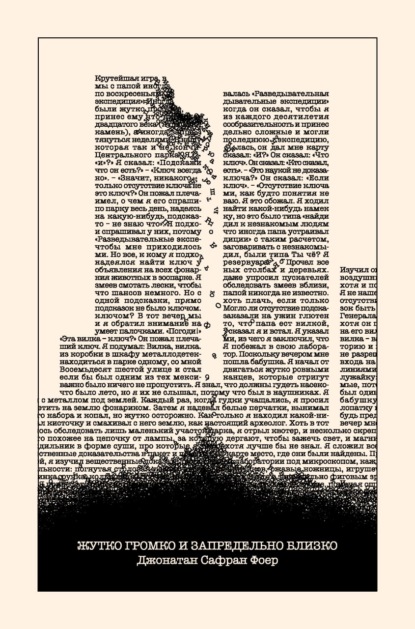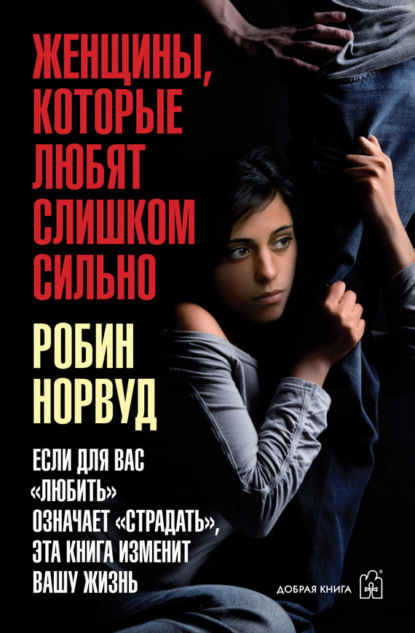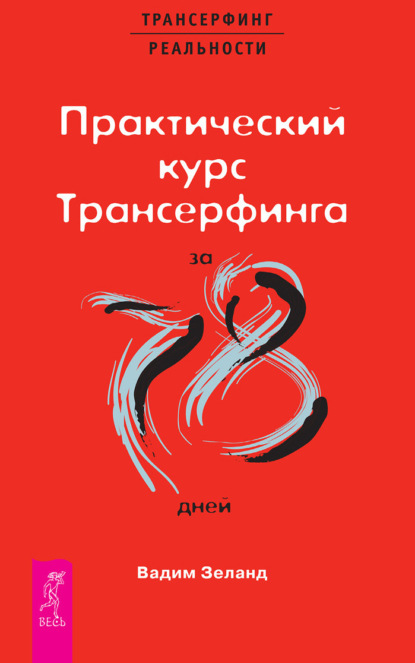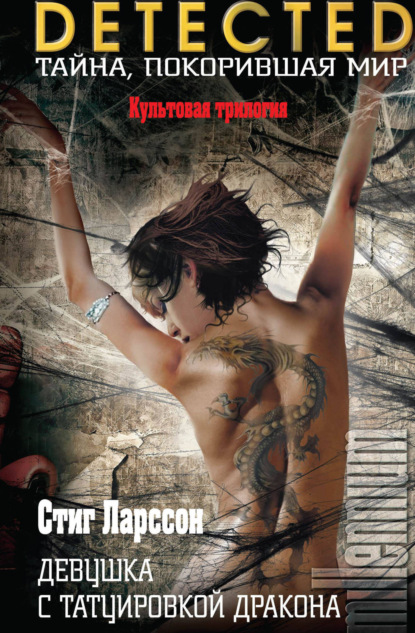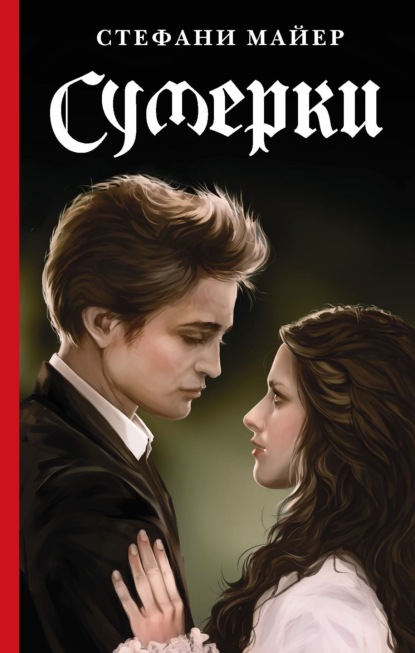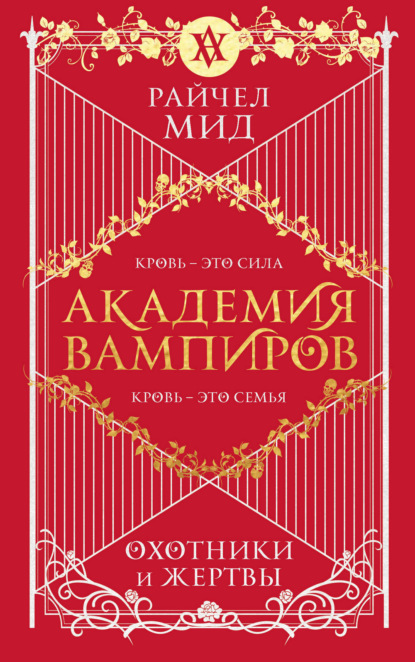Поиск:
Войти
Книги автора: Alessandro Norsa
Сортировка
- сначала новые
- сначала новые
- по рейтингу
- по просмотрам
- по названию
Эта книга является настоящим сборником для изучения магических практик, исходящих из глубин культуры…
Эта книга является настоящим сборником для изучения магических практик, исходящих из глубин культуры агролесоводческой и пастырской области, откуда они и происходят. Среди этих страниц вы найдёте описания магических религиозных обрядов времён года, умилостивление времени жизни, духовные пособия, которыми пользуется целитель, заклинания и расчёты (включая методы избавления от сглаза и экзорцизм одержимых), ясновидение, ритуальное дуновение и методы решения различных проблем со здоровьем. Эта книга создана благодаря случайным совпадениям и алхимии событий, которые объединили антрополога с сельской целительницей. На этих страницах описаны знания, формулы и рецепты магического искусства (например использование крыльев летучих мышей, ядовитых гадюк, жаб и хвостов ящериц) для исцеления людей, передаваемые из поколения в поколение в течение сотен лет. Это настоящий сборник для изучения магических практик, исходящих из глубин культуры агролесоводственной и пастырской области, из которой они происходят. Среди этих страниц – описания магических религиозных обрядов времени года, умилостивление времени жизни, духовные пособия, которыми пользуется целитель, заклинания и расчёты (включая методы избавления от сглаза и экзорцизм одержимых), ясновидение, ритуальное дуновение и методы решения различных проблем со здоровьем.
Эта книга является настоящим сборником для изучения магических практик, исходящих из глубин культуры…
Эта книга является настоящим сборником для изучения магических практик, исходящих из глубин культуры агролесоводческой и пастырской области, откуда они и происходят. Среди этих страниц вы найдёте описания магических религиозных обрядов времён года, умилостивление времени жизни, духовные пособия, которыми пользуется целитель, заклинания и расчёты (включая методы избавления от сглаза и экзорцизм одержимых), ясновидение, ритуальное дуновение и методы решения различных проблем со здоровьем. Эта книга создана благодаря случайным совпадениям и алхимии событий, которые объединили антрополога с сельской целительницей. На этих страницах описаны знания, формулы и рецепты магического искусства (например использование крыльев летучих мышей, ядовитых гадюк, жаб и хвостов ящериц) для исцеления людей, передаваемые из поколения в поколение в течение сотен лет. Это настоящий сборник для изучения магических практик, исходящих из глубин культуры агролесоводственной и пастырской области, из которой они происходят. Среди этих страниц – описания магических религиозных обрядов времени года, умилостивление времени жизни, духовные пособия, которыми пользуется целитель, заклинания и расчёты (включая методы избавления от сглаза и экзорцизм одержимых), ясновидение, ритуальное дуновение и методы решения различных проблем со здоровьем.
The Author, Alessandro Norsa, psychologist and anthropologist, makes a journey to Transylvania, to d…
The Author, Alessandro Norsa, psychologist and anthropologist, makes a journey to Transylvania, to discover the myths and legends of this mysterious land from which Bram Stoker took a cue for his celebrated novel Dracula. As well as a European panorama of the mythological figures similar to vampires, the anthropologist reports on interviews with some farm workers and local historians who he recorded directly in this land. It certainly seems extraordinary the presence, still completely preserved in the population, of ancient exorcist practices to drive out the demonic figures from the villages and communities.
Who of us has not heard talk about Dracula and vampires? These names are so well=known that they have become common cultural heritage. For three hundred years, in fact, at least once every century the world is completely prey to a vampire fashion: in the first half of the 18th century it was the time of the so-called “vampire plague”, towards the end of the 19th century and the start of the twentieth century Bram Stoker’s novel Dracula interest was re-awakened and still today (between the festival of Halloween and the television saga Twilight) there is a new wave of interest. Books already written in this regard follow roughly the same script with very few variations.
Notwithstanding that initial mention is made of it, the sense of this book, as already fully explored by other authors, is not that of dwelling on the famous Stoker book nor to go deeply into the horror film-making. We seek instead to understand the origin of the story between the lines of the ancient myths, above all those that come from Romania and the Balkans because it is from there that the image of the vampire that we all have in mind has been reinforced. To enter further into the argument, we have started the research with reading old Romanian texts on ethnography and mythology, to then go directly to Transylvania among the villages and the people in search of evidence on the traces of Dracula. It was therefore all a voyage into the past to understand both where the appearance and characteristics of the vampire which we know about were born and to experience the place of its origin.
The Author, Alessandro Norsa, psychologist and anthropologist, makes a journey to Transylvania, to d…
The Author, Alessandro Norsa, psychologist and anthropologist, makes a journey to Transylvania, to discover the myths and legends of this mysterious land from which Bram Stoker took a cue for his celebrated novel Dracula. As well as a European panorama of the mythological figures similar to vampires, the anthropologist reports on interviews with some farm workers and local historians who he recorded directly in this land. It certainly seems extraordinary the presence, still completely preserved in the population, of ancient exorcist practices to drive out the demonic figures from the villages and communities.
Who of us has not heard talk about Dracula and vampires? These names are so well=known that they have become common cultural heritage. For three hundred years, in fact, at least once every century the world is completely prey to a vampire fashion: in the first half of the 18th century it was the time of the so-called “vampire plague”, towards the end of the 19th century and the start of the twentieth century Bram Stoker’s novel Dracula interest was re-awakened and still today (between the festival of Halloween and the television saga Twilight) there is a new wave of interest. Books already written in this regard follow roughly the same script with very few variations.
Notwithstanding that initial mention is made of it, the sense of this book, as already fully explored by other authors, is not that of dwelling on the famous Stoker book nor to go deeply into the horror film-making. We seek instead to understand the origin of the story between the lines of the ancient myths, above all those that come from Romania and the Balkans because it is from there that the image of the vampire that we all have in mind has been reinforced. To enter further into the argument, we have started the research with reading old Romanian texts on ethnography and mythology, to then go directly to Transylvania among the villages and the people in search of evidence on the traces of Dracula. It was therefore all a voyage into the past to understand both where the appearance and characteristics of the vampire which we know about were born and to experience the place of its origin.
Der Autor, Alessandro Norsa, Psychologe und Anthropologe, reist nach Transsilvanien, auf der Suche n…
Der Autor, Alessandro Norsa, Psychologe und Anthropologe, reist nach Transsilvanien, auf der Suche nach den Mythen und Legenden dieses geheimnisvollen Landes, das Bram Stoker als Vorlage für seinen berühmten Roman Dracula diente. Neben einer europäischen Rundumsicht in Bezug auf mystische Figuren befragt der Anthropologe Bauern und ortsansässige Historiker direkt Vorort.
Es mag wahrhaft ungewöhnlich erscheinen, wie sehr auch heute noch die antiken Praktiken des Exorzismus bei der Bevölkerung präsent sind und das Wissen darum konserviert wurde, wie man Dämonen von den Städten und von der menschlichen Gemeinschaft fernhält.
Gibt es jemanden, der noch nie etwas von Dracula oder von Vampiren gehört hat? Diese Namen sind so populär, dass sie bereits Bestandteil des allgemeinen Kulturguts geworden sind. Seit dreihundert Jahren steht die Welt mindestens einmal in jedem Jahrhundert im Bann einer literarischen Vampirmode: die erste Hälfte des achtzehnten Jahrhunderts war die Zeit der sogenannten ”Vampir-Pest”; gegen Ende des neunzehnten Jahrhunderts und zu Beginn des zwanzigsten Jahrhunderts erregte der Roman Dracula von Bram Stoker das Interesse und wir erleben auch heute noch stets neue Wellen (von Halloween bis zur TV-Saga Twilight). Die bereits zu diesem Thema erschienenen Bücher folgen mehr oder weniger stets dem gleichen Muster, mit nur wenigen Varianten. Selbst wenn eingangs darauf verwiesen wird, so ist Sinn und Zweck dieses Buches nicht der bereits von anderen Autoren in epischer Breite hergestellte Bezug zum berühmten Roman von Stoker und der Autor will sich auch nicht in Details der Horror-Filmszene verlieren. Es soll vielmehr der Versuch unternommen werden, in den Wurzeln antiker Mythen den Ursprung der Geschichte zu ergründen, insbesondere solcher Mythen, deren Entstehungsgeschichte in Rumänien und auf dem Balkan liegt, denn von dort aus hat sich das Bild des Vampirs eingebrannt, so wie wir es alle vor unserem geistigen Auge haben. Um einen besseren Zugang zu diesem Thema zu finden haben wir die Suche mit der Lektüre alter rumänischer Texte aus der Ethnographie und der Mythologie begonnen, um dann direkt nach Transsilvanien zu reisen und, auf der Suche nach Indizien, Dörfer und Personen zu besuchen, immer auf den Spuren von Dracula. Es ist also eine Reise in die Vergangenheit, um zu verstehen, wo Aussehen und Eigentümlichkeiten des Vampirs, wie wir sie kennen, ihren Ursprung haben sowie, um den Ort kennenzulernen, aus dem er stammt.
Autorul Alessandro Norsa, psiholog şi antropolog, întreprinde o călătorie în Transilvania pentru a d…
Autorul Alessandro Norsa, psiholog şi antropolog, întreprinde o călătorie în Transilvania pentru a descoperi miturile şi legendele acestui ţinut misterios şi care a fost sursă de inspiraţie pentru celebrul roman „Draculaˮ al lui Bram Stoker. Pe lângă prezentarea panoramică a figurilor mitologice asemănătoare cu vampirii din Europa, antropologul realizează interviuri cu săteni și istorici locali pe care le înregistrează direct pe acest tărâm. Este extraordinar cum populaţia a păstrat cu stricteţe unele practici vechi de exorcizare pentru a îndepărta figuri demoniace din sate și din comunități.
Cine dintre noi nu a auzit niciodată vorbindu-se de Dracula sau de vampiri ? Aceste nume sunt atât de populare încât ar putea fi considerate patrimonii culturale universale/comune. De fapt, de trei sute de ani, cel puţin o dată la un secol omenirea/lumea se lasă pradă unei mode vampirice : prima jumătate a secolul al XVIII-lea fu epoca aşa-zisei „ciumei vampiriceˮ, iar, către sfârşitul secolului al XIX-lea şi începutul secolului al XX-lea, romanul lui Bram Stoker „Draculaˮ ne-a trezit/stârnit un viu interes.Chiar şi în epoca actuală se manifestă un nou val (începând cu sărbătoarea de Holloween şi continuând cu saga cinematografică Twilight).
Cărţile care au fost deja scrise pe această temă sunt aproape toate o copie fidelă a romanului lui Stoker, cu doar câteva mici diferenţe/deosebiri/particularităţi. Scopul acestei cărţi nu este nicide a zăbovi asupra celebrului roman al lui Stoker, şi nici să intrăm în lumea filmelor horor/de groază, după cum s-ar putea crede iniţial. Aceste lumi şi teme au fost amplu analizate de alţi autori. Vom încerca în schimb să înţelegem originile istoriei din negurile adânci ale miturilor antice şi în special ale celor care provin din România şi din Balcani, pentru că acolo s-a consolidat imaginea vampirului pe care ne-o închipuim noi astăzi.
Pentru a intra mai bine în miezul subiectului, ne-am început cercetările cu lectura unor vechi texte de etnografie şi mitologie româneşti, după care ne-am îndreptat direct paşii spre Transilvania, pe urmele lui Dracula, străbătând sate şi discutând cu persoane, în căutarea de indicii.
O călătorie, aşadar, în trecut pentru a înţelege unde s-au născut imaginea şi trăsăturile/caracteristicile vampirului pe care îl cunoaştem noi astăzi şi să-l întâlnim chiar pe tărâmul din care provine.
Der Autor, Alessandro Norsa, Psychologe und Anthropologe, reist nach Transsilvanien, auf der Suche n…
Der Autor, Alessandro Norsa, Psychologe und Anthropologe, reist nach Transsilvanien, auf der Suche nach den Mythen und Legenden dieses geheimnisvollen Landes, das Bram Stoker als Vorlage für seinen berühmten Roman Dracula diente. Neben einer europäischen Rundumsicht in Bezug auf mystische Figuren befragt der Anthropologe Bauern und ortsansässige Historiker direkt Vorort.
Es mag wahrhaft ungewöhnlich erscheinen, wie sehr auch heute noch die antiken Praktiken des Exorzismus bei der Bevölkerung präsent sind und das Wissen darum konserviert wurde, wie man Dämonen von den Städten und von der menschlichen Gemeinschaft fernhält.
Gibt es jemanden, der noch nie etwas von Dracula oder von Vampiren gehört hat? Diese Namen sind so populär, dass sie bereits Bestandteil des allgemeinen Kulturguts geworden sind. Seit dreihundert Jahren steht die Welt mindestens einmal in jedem Jahrhundert im Bann einer literarischen Vampirmode: die erste Hälfte des achtzehnten Jahrhunderts war die Zeit der sogenannten ”Vampir-Pest”; gegen Ende des neunzehnten Jahrhunderts und zu Beginn des zwanzigsten Jahrhunderts erregte der Roman Dracula von Bram Stoker das Interesse und wir erleben auch heute noch stets neue Wellen (von Halloween bis zur TV-Saga Twilight). Die bereits zu diesem Thema erschienenen Bücher folgen mehr oder weniger stets dem gleichen Muster, mit nur wenigen Varianten. Selbst wenn eingangs darauf verwiesen wird, so ist Sinn und Zweck dieses Buches nicht der bereits von anderen Autoren in epischer Breite hergestellte Bezug zum berühmten Roman von Stoker und der Autor will sich auch nicht in Details der Horror-Filmszene verlieren. Es soll vielmehr der Versuch unternommen werden, in den Wurzeln antiker Mythen den Ursprung der Geschichte zu ergründen, insbesondere solcher Mythen, deren Entstehungsgeschichte in Rumänien und auf dem Balkan liegt, denn von dort aus hat sich das Bild des Vampirs eingebrannt, so wie wir es alle vor unserem geistigen Auge haben. Um einen besseren Zugang zu diesem Thema zu finden haben wir die Suche mit der Lektüre alter rumänischer Texte aus der Ethnographie und der Mythologie begonnen, um dann direkt nach Transsilvanien zu reisen und, auf der Suche nach Indizien, Dörfer und Personen zu besuchen, immer auf den Spuren von Dracula. Es ist also eine Reise in die Vergangenheit, um zu verstehen, wo Aussehen und Eigentümlichkeiten des Vampirs, wie wir sie kennen, ihren Ursprung haben sowie, um den Ort kennenzulernen, aus dem er stammt.
Autorul Alessandro Norsa, psiholog şi antropolog, întreprinde o călătorie în Transilvania pentru a d…
Autorul Alessandro Norsa, psiholog şi antropolog, întreprinde o călătorie în Transilvania pentru a descoperi miturile şi legendele acestui ţinut misterios şi care a fost sursă de inspiraţie pentru celebrul roman „Draculaˮ al lui Bram Stoker. Pe lângă prezentarea panoramică a figurilor mitologice asemănătoare cu vampirii din Europa, antropologul realizează interviuri cu săteni și istorici locali pe care le înregistrează direct pe acest tărâm. Este extraordinar cum populaţia a păstrat cu stricteţe unele practici vechi de exorcizare pentru a îndepărta figuri demoniace din sate și din comunități.
Cine dintre noi nu a auzit niciodată vorbindu-se de Dracula sau de vampiri ? Aceste nume sunt atât de populare încât ar putea fi considerate patrimonii culturale universale/comune. De fapt, de trei sute de ani, cel puţin o dată la un secol omenirea/lumea se lasă pradă unei mode vampirice : prima jumătate a secolul al XVIII-lea fu epoca aşa-zisei „ciumei vampiriceˮ, iar, către sfârşitul secolului al XIX-lea şi începutul secolului al XX-lea, romanul lui Bram Stoker „Draculaˮ ne-a trezit/stârnit un viu interes.Chiar şi în epoca actuală se manifestă un nou val (începând cu sărbătoarea de Holloween şi continuând cu saga cinematografică Twilight).
Cărţile care au fost deja scrise pe această temă sunt aproape toate o copie fidelă a romanului lui Stoker, cu doar câteva mici diferenţe/deosebiri/particularităţi. Scopul acestei cărţi nu este nicide a zăbovi asupra celebrului roman al lui Stoker, şi nici să intrăm în lumea filmelor horor/de groază, după cum s-ar putea crede iniţial. Aceste lumi şi teme au fost amplu analizate de alţi autori. Vom încerca în schimb să înţelegem originile istoriei din negurile adânci ale miturilor antice şi în special ale celor care provin din România şi din Balcani, pentru că acolo s-a consolidat imaginea vampirului pe care ne-o închipuim noi astăzi.
Pentru a intra mai bine în miezul subiectului, ne-am început cercetările cu lectura unor vechi texte de etnografie şi mitologie româneşti, după care ne-am îndreptat direct paşii spre Transilvania, pe urmele lui Dracula, străbătând sate şi discutând cu persoane, în căutarea de indicii.
O călătorie, aşadar, în trecut pentru a înţelege unde s-au născut imaginea şi trăsăturile/caracteristicile vampirului pe care îl cunoaştem noi astăzi şi să-l întâlnim chiar pe tărâmul din care provine.
1
Популярные книги




